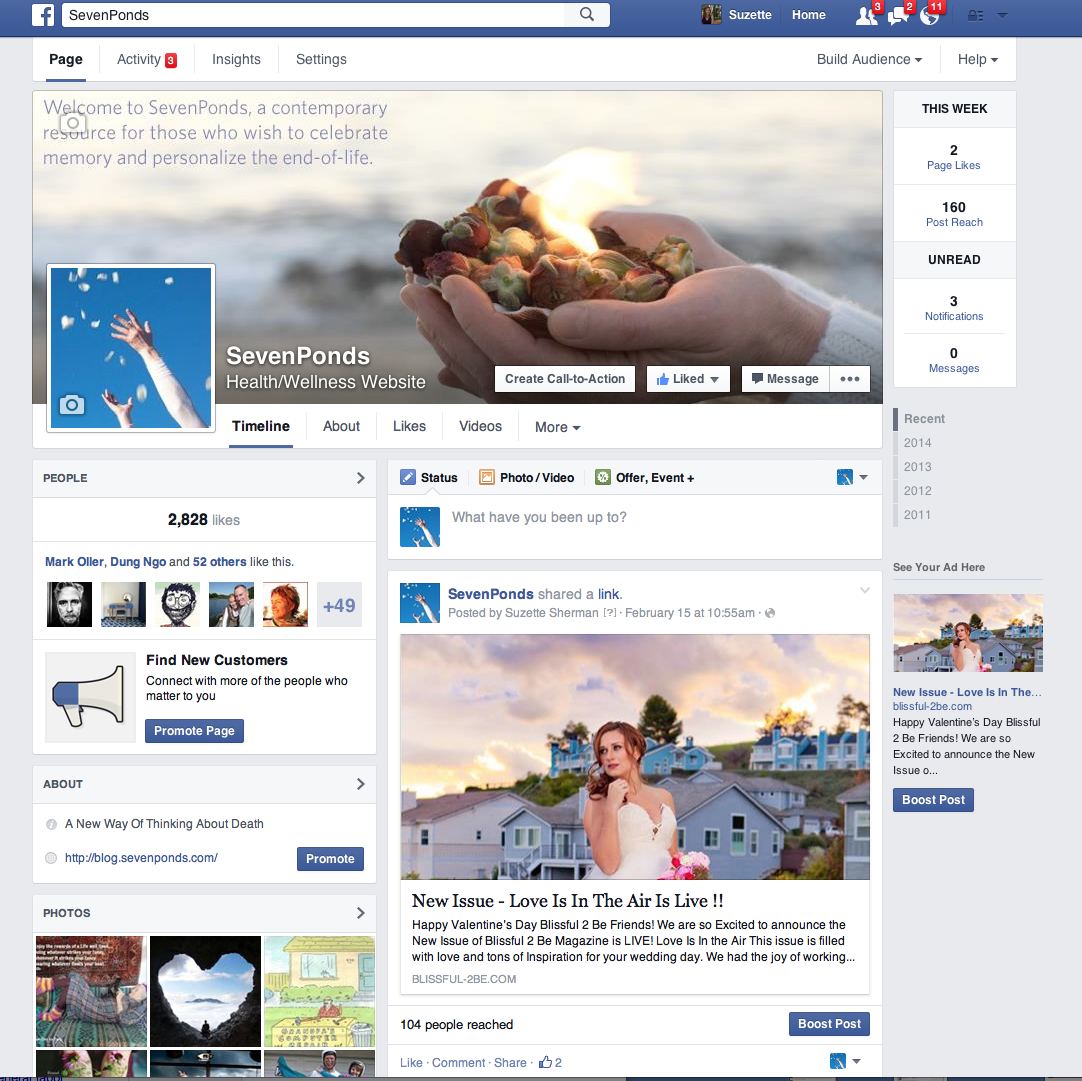I’ll consider this post my throw-away, because it’s slightly ridiculous and I have more that I’d like to write about. Just some random musings. But after skimming through some of the posts from last Friday, I came across a very interesting post by Jack that discussed the ways in which we’re losing the visual literary traditions we’ve been studying.
I 100% agree that our contemporary Western culture undervalues calligraphy and the talent required to quite literally sculpt a book from natural materials. When it comes to script, I believe we’ve lost a very intriguing art form. However, I believe that current methods of Western communication retain many visual elements that correspond to illuminated manuscripts, perhaps in unexpected places.
Am I the only one who sees an eerie similarity between the Facebook layout and the illuminated manuscript template we got in class the other day? I couldn’t find a pdf of the handout on Blackboard, but here’s an example of a Facebook profile:
The profile picture stands in for the historiated letter, the bar reserved for ads on the right corresponds to the marginalia, the different sizes/colors of text resemble rubrics (words highlighted in red to designate a new section), the cover photo is the main miniature, and the various posts/announcements are presented in a manner akin to the succinct and simplified verses copied into manuscripts for the illiterate. Of course, that last observations begs the question: are we reverting to a textually simplified, semi-illiterate means of obtaining our information, heavily based upon obvious visual cues and pictures? No, I don’t think so. But it could be the ultimate throwback.
Contrary to popular belief, the United States is not an entirely literate nation. However, broadly speaking, literacy has become inconceivably more accessible in the past 100 years than it ever would have been for medieval laypeople. Facebook is different in that its ultimate goal is to communicate written ideas accompanied by pictures, whereas for owners of Books of Hours, the written text was unnavigable territory only decoded through the use of miniatures.
Still, I think it’s significant that our minds apparently continue to find the general layout of the illuminated manuscript intriguing and pleasurable. Much of this has to do with the incorporation of visual signs; they grab our attention and are aesthetically enjoyable. Facebook may have replaced hand-drawn illustrations with a wide array of imagery (photographs, video, digital art, and pictures of paintings) but one can’t ignore its focus on the visual aspect of storytelling. Some of my friends post nothing but photos. The images we encounter continue to tell stores in a compelling way; that’s something literacy hasn’t been able to eradicate.
I think we underestimate the presence of visual literary traditions and their “unconventional” narratives.


Cedar, I think there is definitely a correspondence with illuminated manuscripts and the layout of Facebook. It is designed to focus on graphics and photos, and share small pieces of information. If you think about any on the text on Facebook it is always condensed. You have the option to read an entire post, but for the most part the focus is on the imagery and just trying to put as much information as possible into the newsfeed. That leads me to another point you make about illiteracy and its possible connect to the image focus of Facebook. Illiteracy exists in the United States but I think that the bigger influence on Facebook is the pace of our culture and how people don’t spend long amounts of time on Facebook but they hop on for short periods of time multiple times a day. For the short time your on there, you want to find out as much as possible without getting bored. I think this is a fascinating connection you’ve made!
This comparison of Facebook and illuminated manuscripts is really interesting. I’ve never noticed it before, but now that you’ve pointed it out it is hard to miss! I would be interested to know if Facebook’s graphic designers had the illuminated manuscript layout in mind when planning the Facebook template. If you look at your profile on Facebook or any other social media, it really is all about telling a little story about yourself in an aesthetically pleasing way. Just as the Duc de Berry was not so subtly bragging about his life and possessions in the Tres Riches Heures, people today love to post photos of themselves and their accomplishments and seek approval from others.
I also liked your observation about how Facebook differs from a Book of Hours in that it is about presenting written ideas accompanied by pictures. I was thinking that if Facebook is sort of our modern day digital age form of an illuminated manuscript, Instagram would be a modern book of hours. While Facebook is more about text and photos, Instagram is much more picture oriented, and displays your posts in chronological order. Scrolling through your Instagram feed with all of the square little pictures seems a lot like flipping through a little book of hours like the one we have for class.
It’s super interesting to think of modern adaptations of illuminated manuscripts – I had always thought of comic books or storybooks with pictures as examples of this, but never social media! I believe that art is constantly adapting to different media and technologies and remnants of older art forms are still ever-present. I like the idea that although we may have lost the complex art of illuminated manuscripts in today’s fast-paced digital and print world, we still have pieces of that art in everyday things like Facebook and graphic novels.